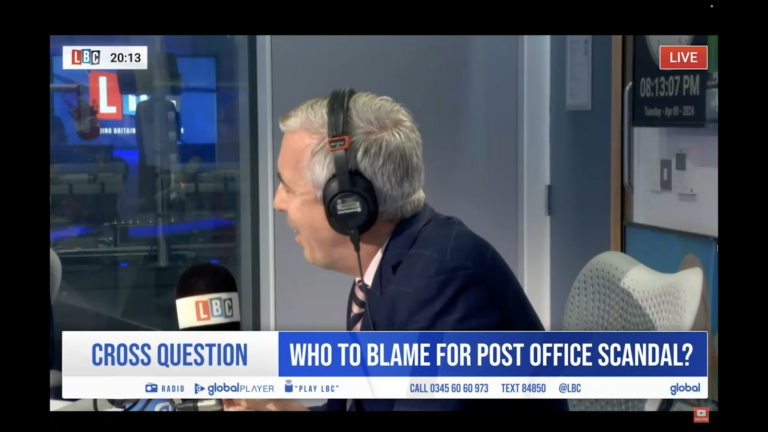Quote of the Day:
“Rabbit’s clever,” said Pooh thoughtfully. “Yes,” said Piglet, ‘Rabbit’s clever.
“And he has Brain.”
“Yes,” said Piglet, “Rabbit has Brain.”
There was a long silence.
“I suppose,” said Pooh, ‘that that’s why he never understands anything.”
A.A Milne, Winnie-the-Pooh
And so, right in the midst of recess, MHCLG pushes out the long awaited Social Housing Green Paper. Usually a recess publication is a way of trying to let it slip under the radar, although in this case (and particularly given the profile of the Paper) I think we can blame the ineptitude of the government in managing to keep Ministers in post requiring a revolving door reshuffle policy at MHCLG, rather than any deliberate attempt to hide it away. Certainly, the new leadership will have wanted to ensure they were happy with the Paper before publication.
Some very warm words in the intros from both Mrs Maybe and Mr Broken-housingmarket-shire (this is how very important it is, two intros are required) give way to some woolly policy suggestions. If you don’t want to read any further, here are some key thoughts:
- Many of the proposals related to safety and resident inclusion really shouldn’t require primary legislation.
- Many of the issues, particularly the supply side issues, are being looked at in isolation and without reference to the broader housing sector, which makes no sense from an actual delivery perspective and is a missed opportunity.
- Allowing tenants to increase their ownership by 1% a year is likely to be at best difficult and at worst completely unworkable for many (but not all) providers.
- Increased borrowing rights and future rental certainties will support more local authority building, it may not be enough or quite right at this stage but it is a start.
- Reviewing lettings and allocations criteria will be a difficult process to go through
- The approach to Local Housing Companies is quite restrictive and risks undermining the way in which many of them currently operate.
- And yes Community Land Trusts are much more prevalent in the US because land is much cheaper – it really isn’t a difficult equation and is a discussion that has been going on since Nick Boles was in post.
- However, there are some positive elements and at least there is a deliberate focus on some of the issues which limit supply, but this can only be the start of the debate, not the conclusion.
In summary, some positive starts but lacking in detail and conflict between policies may cause problems. It is however, a consultation, so the White Paper (assuming that appears before we have a new government) should be much further developed.
As an aisde, I’m also always intrigued when Conservative Governments refer to things as a ‘New Deal’; deliberately invoking the social idealism of Roosevelt seems somewhat at odds with general Conservative principles, particularly of this government.
A Bit More Detail
As a first point, the Paper confusingly uses ‘social housing’ and ‘affordable housing’ as interchangeable terms rather than as distinct offerings in policy (and political) terms. In a shocking finding, the Green Paper states that social housing tenants tend to be of a similar age and ethnic mix to all households, which is really quite remarkable that those in social housing may actually be just normal members of society. However, within that is a fairly stark statistic – only 7% of social rented households are unemployed, highlighting the fact that the majority of those are simply unable to afford properties in the private-rented sector and making even more clear the issue of demand and supply.
Resident Engagement
Of course, post-Grenfell, safety is the priority on the list for government with the Paper generally focusing on what remedial action has been taken and future fire safety measures. It is noticeable also that the Draft London Plan includes fire safety issues and the Green Paper itself highlights the need for greater resident involvement in building safety issues.
For RPs, the focus on ensuring residents have a stronger voice in influencing decisions and challenging landlords will create new pressures in terms of scrutiny. Whilst the majority of RPs already work in this way, the perception-led approach will bring new hurdles in terms of reporting in particular.
What is clear is that there is a disconnect between how residents view complaints and redress processes and how RPs and others in the industry view the process. This is an issue which needs to be addressed – although whether government legislation is the appropriate or necessary way to do this is a totally different issue.
Perceptions of Social Housing
The Green Paper highlights the stigma that people feel who are dependent on social housing, comparing this with the pride people feel in the NHS (yes, junior doctors and those waiting for 10 hours in A&E all feel the pride that the government shares in the NHS…).
The Paper focuses on a ‘See the Person campaign’, looking at how to address misperceptions and reduce stigma. Again, what is remarkable in this is the lack of focus on how the lack of supply means that those in need are left with little choice over their own living arrangements and the impact that this has on perpetuating the stigma.
Further, the paper references ‘poor doors’ without looking at the reasons these exist in the first place or genuine ways to address them – it is not just a simplistic case of designing them out as the paper seems to suggest.
Home Ownership and House Building
The closest the paper gets to really talking about supply comes in reference to home ownership and right to buy, focusing on how many people would like to take up the offer of right to buy – a policy that has done more to decimate the affordable housing stock across the country than any other, but lets not let the facts get in the way of a good vote winner.
The principle of the policy is fine – every house taken out of the system, gets replaced by another, therefore keeping the system in perfect balance. Except it doesn’t, because local authorities don’t get to keep the receipts of the sales in their entirety and are restricted with how they spend what they do get to keep.
The paper promises new borrowing structures, new building frameworks (Community Land Trusts feature here) and more certainty on future rental incomes (which will in turn help with borrowing). However the paper also highlights the need to assess the effectiveness of local authorities in building new homes, which is likely to be problematic in many cases given that most authorities haven’t built a home since the 1970s. Also, whilst the paper is also reviewing the use of right to buy receipts, it isn’t suggesting that the Treasury forgoes their massive chunk, so ultimately you’re still left with the problem that local authorities don’t have the finances to build, even with increased borrowing potential.
Of significance is the decision to drop the legislation which would require local authorities to sell or make a payment in respect of higher value council homes, with much of the funds going to central government.
Local Housing Companies are praised as a means of delivering in a way the private sector cannot. However, there are some potentially problematic aspects within the Paper suggesting that any disposal of five homes or above to a Local Housing Company needs to incorporate proposals to maximise affordable housing as well as how the scheme will enable tenants to become home owners. What the government does not seem to recognise is that Local Housing Companies tend to work because they use private housing receipts to fund affordable housing, setting the threshold so low may well make financing developments more difficult.
Finally, the focus on home ownership returns us to the place whereby the vicious circle is maintained – homes are taken out of the stock and not replaced, house price inflation perpetuates, the government declares the private sector has a moral duty to deliver the housing and we all come back to square one. Let us hope that it is different this time…
For more information, visit the Snapdragon website.




